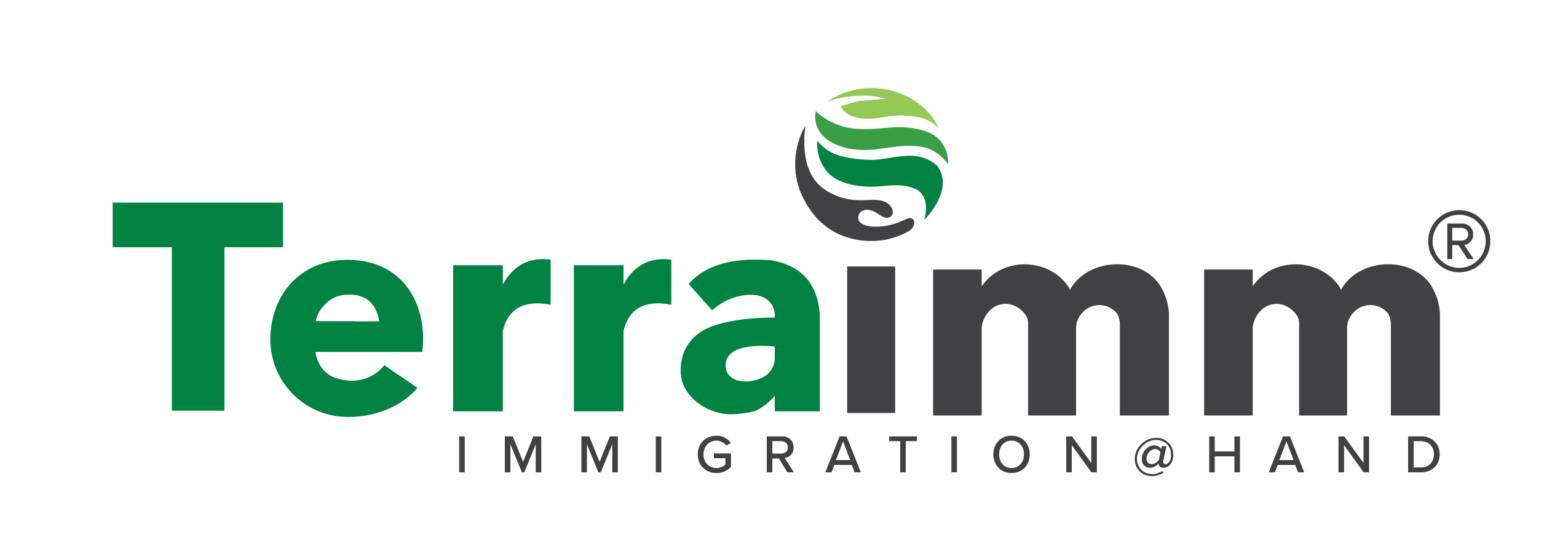Para obtener más información:
Descripción general:
- What is an H-1B visa?
- What are the benefits of the H-1B visa?
- What are the requirements for the H-1B visa?
- H-1B visa numerical limitations
- Who files the petition?
- H-1B visa process
- H-1B visa documents
- H-1B visa fees
- H-1B visa processing time
- Amending an H-1B visa
- Recapturing time
- H-1B visa to green card
- H-1B visa exceptions
- F-1 to H-1B visa
1. What is an H-1B visa?
Foreign people can work specialty jobs in the U.S. with the help of the H-1B special visa. Any of the following fields, but not just those, may be the subject of this work:
- The physical sciences, social sciences, medicine, health, education, business, law, accounting, religion, and the arts; and architecture, engineering, and mathematics.
– You could be qualified for an H-1B if there is a claim that the work demands a bachelor’s degree. Either full-time or part-time employment is possible.
– There are 65,000 H-1B visas available each year. For people with advanced degrees (master’s, J.D., etc.) from U.S. schools, an additional 20,000 H-1B visas are available.
– For up to three years, H-1B visas are valid. There are other three-year extensions available, making the total validity term six years. The spouse and children of H-1B visa holders may accompany them. They would be considered H-4 dependents.
– Holders with H-1B visas are free to switch jobs but they have to adhere to certain standards. Beneficiaries of H-1B visas may also apply for permanent residency. This is because the visa has a dual purpose.
2. What are the benefits of the H-1B visa?
Having an H-1B visa has several advantages. Here are a few examples:
In the U.S. employment is permitted. The H-1B visa program enables foreign people to work in specialized jobs in the U.S. and this makes it possible for highly qualified people to live and work in the United States. The recipients and the U.S. economy both gain from this.
You can simultaneously pursue permanent resident status.
Even though the H-1B visa is a nonimmigrant visa, you will need to demonstrate “temporary entrance” against demonstrating a nonimmigrant intention. You must demonstrate that once your H-1B status expires, you will be leaving the country. You are not compelled to keep a residence overseas. This implies that you can apply for advantages that could result in a green card while you are in H1-B status without compromising your visa.
Your dependents can come to the U.S. with you.
H-4 status is available to your spouse and dependent children who are younger than 21 and are not married. This implies that they may travel to America with you. H-4 status holders are permitted to go to school but are not permitted to work (subject to certain exceptions). Additionally, H-4 holders cannot accompany the primary worker outside of the United States. If the visa holders are present in the U.S. when the primary H-1B holder is typically away from home, the H-4 status will be terminated.
H-1B visa portability.
The mobility features of an H-1B visa are a significant advantage. Accordingly, if you are on an H-1B and switch employment, you may start working for the new company as soon as your petition is filed.
3. What are the requirements for the H-1B visa?
The requirements for an H-1B visa are extensive. You can find out if you qualify for these provisions with the aid of an immigration attorney. Additionally, our office may assist you in fathering the necessary supporting documentation to establish your eligibility. Please be warned that anyone working on an H-1B may be the subject of arbitrary site inspections. This is to guarantee that the data given to the U.S. government was accurate.
You must have a job offer from a U.S. company.
The recipient must get a genuine employment offer from the business. If there is no written contract, this can be accomplished by a summary of an oral agreement. Furthermore, the beneficiary’s need must be supported by proof.
There must be a valid employer-employee relationship.
This is a necessary and significant need. There must be employer control for the employer-employee relationship to be legal. Control refers to the capacity of the petitioner to choose the time, place, and manner in which the beneficiary performs his or her tasks. If the recipient is neither an employee nor reports to the petitioner, USCIS will reject the petition.
USCIS will examine the following factors to determine if there is a valid employer-employee relationship:
– If the petitioner supplies tools or other instruments to the beneficiary
– If the petitioner can hire, pay, and fire the beneficiary
– If the petitioner evaluates the beneficiary’s work
– If the petitioner provides any employee benefits to the beneficiary
– And if the beneficiary appears on the petitioner’s tax information
When the beneficiary is off-site, it is difficult to sustain an employer-employee connection. However, if the petitioner manages the beneficiary’s work schedule and maintains frequent communication, a legitimate connection may emerge. An employee-employer connection may be demonstrated by a contract or other document outlining the terms and circumstances of the position.
There must not be any labor disputes at the workplace.
If there is a strike or other labor dispute at the beneficiary’s place of employment, USCIS will reject the petition. If the petition has already been granted, the procedure will be put on hold, and you won’t be allowed to enter the country.
The role must be categorized as a specialized occupation. A specialty profession needs an understanding of an area, either theoretically or practically. If you want to find out if your work counts as a specialty occupation, you should consult:
– The Department of Labor’s Occupational Outlook Handbook (OOH)
– The Department of Labor’s O’NET online system
– and/or the Department of Labor’s Dictionary of Occupational Titles
The work tasks of each candidate are more important than the title of the position. We’ll carefully examine the job description in this case. This covers the precise responsibilities, obligations, demands, and real job specifications.
Other factors to determine if the job is a specialty position would be:
– the beneficiary’s education and work experience
– the nature of the petitioner’s business
– the industry standards
– salary (both beneficiary and the industry standards)
– the business size
Additional factors could be:
– work from prior employees in the same role
– the job listings for the same or similar positions in the past
Even for positions with identical titles, USCIS may make a different decision. This is a result of USCIS emphasizing the tasks and job descriptions. The position must call for a bachelor’s degree or above (or equivalent). A bachelor’s degree (or above) in a particular subject of study linked to the occupation must be required for the position. Not all international degrees with the title “bachelor’s degree” are comparable to bachelor’s degrees awarded by U.S. institutions.
A credentials examination of your foreign transcript and degree may be required by USCIS. This might assist in demonstrating that you fulfilled the bachelor’s degree criteria for the H-1B visa. The American Association of Collegiate Registrars and Admissions Officers Electronic Database for Global Education is the most often used credentials assessor (AACRAO EDGE). It could be helpful to draw attention to the pertinent courses in your transcript and link it to the petitioner’s letter of support.
EXCEPTIONS:
Even if you lack the necessary academic credentials for the position, you may still be eligible for an H-1B visa. Combining education, training, and job experience may accomplish this. In this case, a petitioner would have to prove that the prior experience is equal to the required degree.
The theoretical and practical application of specific knowledge must be present in your prior work. Evidence in favor of this includes:
– Recognition from a leader in your field
– Published material by or about you
– Evidence of licensure
– Evidence of significant contribution to the field
– Results from CLEP or PONSI
– Membership in a professional association
The level of education typically required for employment affects the amount of experience needed. You must possess a PhD if a doctorate is a prerequisite for employment. For instance, if a master’s or advanced degree is customarily required, a bachelor’s degree and five years of relevant work experience may be seen as being equal. Three years of relevant work experience may substitute for one year of schooling if a bachelor’s degree is necessary.
You must have paid all outstanding fees.
The employer is responsible for covering all expenses associated with an H-1B petition. If a set charge is not necessary, explain why in your cover letter.
You must have licensure (if required by federal, state, or local law).
If the employment calls for a license, the beneficiary must already have one before the H-1B application is approved. If not, offer proof that the delay was caused by a technical issue. Restrictions on the use of licenses only apply for one year, or until the license expires, whichever comes first. A temporary license’s validity time cannot be surpassed by approval.
There are only two exceptions to this rule:
- If the state does not demand a permanent license
- If the state permits those who lack a license to practice medicine under the direction of a licensed physician
People in the healthcare industry should be aware that state regulations take precedence over OOH standards. There is no requirement for a license for those who work primarily in research or education – not patient care. Additionally, there could be some other exemptions for people in the medical field.
Be aware that holding a license does not automatically qualify you for a specialized job. For instance, nursing, which does not qualify as a special vocation, requires a license. Furthermore, not all specialized jobs need a license. If a license is not necessary for your employment, you will not face any discrimination since you do not have one.
4. H-1B visa numerical limitations
You should be aware of the H-1B visa numerical cap. For example, a total of 65,000 H-1B visas are offered each year, with an extra 20,000 allocated for those with advanced degrees.
Any petition that is not drawn in the lottery or that is submitted after the deadline will be disregarded. Additionally, any petition that lacks the necessary fees and/or documentation will be denied. As a result, you must stay on top of the H-1B visa application process. A qualified immigration attorney can guarantee that you have the best possible chance of success.
Many competent candidates may never be considered due to the lottery. To alter this procedure, reform has been promoted. Some supporters contend that H-1Bs should only be granted to those with the greatest salaries or the highest levels of competence. However, this has not yet been put into practice; instead, we now use a lottery method.
5. Who files the petition?
On behalf of a foreign citizen who will be granted an H-1B visa, a U.S. corporation will submit the petition. The U.S. corporation is called the petitioner. The beneficiary is a foreign national.
A petitioner must:
- Have extended a job offer to the beneficiary
- Have a valid employer-employee relationship with the beneficiary
- Have an Internal Revenue Service Tax identification number
In any given calendar year, petitioners are only permitted to submit one petition per recipient. The petition or visa will be rejected or canceled if the petitioner makes several applications. This only differs if the petitioner is informed of a delay at the time of first filing. In this situation, the petitioner may withdraw the initial petition and send a second one along with an explanation.
However, a petition for the same beneficiary may be submitted by several businesses belonging to the same corporate family. Each organization in this situation needs its own Federal Employer Identification Number. In addition, they must have a valid reason of their own for hiring the recipient.
Another option is to have an agent submit an H-1B petition. Acting on behalf of the petitioner is this individual. If the recipient works for more than one organization, an agent may file on behalf of those organizations. Keep in mind that all standards must still be satisfied even if an agent submits the petition.
A member of my staff or I will be pleased to help you with your H-1B file if you need one.
6. H-1B visa process
Obtaining an H-1B visa requires several steps. The overall rule is as follows, followed by a more thorough explanation:
- Apply for the H-1B registration period
- If selected in the lottery, submit an H-1B application
- Receive approval
- If abroad, submit a visa application
- Begin work in the United States
There must be a separate registration application for each petition that is subject to the H-1B quota. Every prospective employee must go through this. Petitioners can then submit Form I-129 if electronic registration is chosen. Before, petitioners were required to file Form I-129 each year, whether or not their request was accepted.
Each electronic registration is obliged to pay a $10 fee to DHS, which must be paid at the time the registration is submitted. If the fee is not paid, the registration will not be considered filed.
Submit an H-1B petition
Remember to submit your H-1B petition in two copies. Your application must be mailed to the relevant USCIS Service Center. For consular processing, one should be the original, and the second, a copy. Various locations will be used for USCIS distribution. Please visit uscis.com to see where to file your paperwork depending on your job information. You can get help from an immigration attorney figuring out where to mail your petition.
You must submit your petition before April 1st, as specified in Section 4: “Numerical Limitations.” Please be aware that once the petition reaches the Service Center, it is considered to have been received. On the same day, all petitions will be given the same consideration. If chosen, be mindful of the conditions for maintaining your status and submitting your renewal. Extensions for H-1B visas cannot be requested more than six months before the expiration of the status. As a result, it is advised that you start your preparations as soon as possible.
To file for your H-1B visa, here are some of the documents that you may need:
- Form I-907: this document is only necessary if you pay the premium processing charge (the $2,500 fee can be paid by the beneficiary). This ensures that assuming there aren’t any RFEs, you will hear back from us within 15 calendar days.
- Using Form I-129 and Supplement H: The recipient, the position, and details about the U.S. firm are all included in this form. The officer can assess whether the H-1B requirement is met using the information supplied here.
Exhibit packet:
- Evidence proving the beneficiary’s legal position, if requesting a change of status
- Always attach a copy of the biographical page from the beneficiary’s and any dependents’ passports
- An authorized application for a labor condition
- A statement from the U.S. firm
- A letter of introduction from your lawyer
- Any more supporting materials that can strengthen your argument
Receive an approval
You will get a Form I-797 acceptance notification after your petition is accepted.
The petition will be processed for approval if USCIS is pleased with it. The government may submit a request for Evidence if it cannot decide on an approval (RFE). This explains the requirements of the H-1B application were not satisfied and why the USCIS cannot provide approval. Here, the petitioner may provide more proof to back up their application.
Additionally, USCIS may issue a Notice of Intent to Revoke or Deny (NOIR/NOID), which requires a response within the allotted time frame. The petition will be dismissed if neither a response to either document or sufficient justification is provided.
But if the additional information enables USCIS to establish that all requirements for an H-1B are met, a Form I-797 with an H-1B petition approval will be issued. H-1B petitions that have been approved are valid for up to three years or as long as they are still in effect. Please be informed that if any of the facts included in the petition materially alter or were falsely reported, an H-1B petition may be withdrawn.
Submit a visa application
The foreign national may take an appointment at the U.S. consulate after gaining authorization. Keep in mind that you cannot submit a visa application more than 90 days before the job’s start date. The foreign individual will meet with a U.S. consulate and provide their I-797 permission after setting up a consular interview.
The petition’s acceptance meant that the requirements for an H-1B visa were considered to have been satisfied, therefore the interview would be centered on the applicant’s eligibility. The petition copy and documentation of the beneficiary’s unique qualifications must be brought. Different forms are needed for various consulates and circumstances. Please note that visas are not required to be awarded for the whole period of the petition’s validity. To find out how long your visa stamp will be valid, visit the Department of State’s schedule of visa reciprocity.
Begin work in the United States
Beneficiaries of H-1B visas are permitted to enter the country up to 10 days before the petition’s commencement date and remain for up to 60 days (with some restrictions) following the expiration of their H-1B status. You must bring your passport, H-1B visa, and Form I-797 approval with you when you arrive. Make sure the I-94 card you get has the proper information. You should be careful to keep track of when your status expires.
7. H-1B visa documents
- Several documents are needed when applying for an H-1B visa. A broad list is provided below. Please be aware that this is not an exhaustive list and the specific documents you will require will depend on your particular situation:
- A detailed job description
- A copy of the foreign national’s resume
- Transcripts or certifications, accompanied by credentials evaluation (if applicable)
- Copies of training certificates, with an outline of the curriculum
- Support letters from previous employers (if applicable)
- Basic company information
- Biographic page(s) of passport(s) for the applicant and any dependents
- A DOL job description
- Statements from professional associations (if applicable)
- Job postings for similar positions
- Written contract or summary of the oral agreement
- Federal tax returns
- Business plan
- Evidence of the degree required is required for all people in that position
- Evidence of licensure (if applicable)
8. H-1B visa fees
The U.S. employer or their representative is responsible for paying the following fees. However, there can be additional expenses related to the H-B1 visa application procedure. These can be paid for by the beneficiary and include things like translation costs, photocopying costs, or transportation. Please note that all costs are approximate and are liable to change.
- ACWIA Fee: $1,500 for employers with 26 or more employees and $750 for employers with 25 or fewer employees
- Fraud prevention and detection fee: $500
- For petitioners with 50+ employees and with 50% or more of their employees holding H-1B, L-1A, or L-1B status (if applicable): $4,000
- Form I-129 fee: $460
- Premium processing fee (Form I-907): $2,500 (fee can be paid by the beneficiary)
9. H-1B visa processing time
The duration of time between H1-B application and acceptance is dependent on many variables. These elements consist of:
– whether premium processing was elected
– which type of H-1B visa you are requesting (cap-exempt, advanced degree, regular)
– which USCIS Service Center do you use
– and which U.S. consulate you are being stamped at (if you are abroad)
As a result, processing may take less than two months or as long as nine months.
In addition, until the first day of October after the lottery, recipients will not be permitted to work, regardless of the date of permission.
10. Amending an H-1B visa
- There are still a few things to keep in mind when a beneficiary starts an H-1B job in the United States. A fresh or updated petition must be submitted if the beneficiary changes employers or 50% of their employment responsibilities.
- A new labor condition application must be submitted whenever the work site changes. The recipient may stay for up to 60 days after an unexpected employment termination or until their visas expire, whichever comes first. The recipient may look for a new job during this period to continue living in the U.S., but they may not be able to locate one. Any changes to a beneficiary’s status at work or the U.S. corporation should be noted. An immigration lawyer may assist you in this situation by advising you on the necessary actions to do to comply with the H-1B visa program.
- An H-1B is also only good for a maximum of three years. A request for an extension must be made for you to stay for up to three more years. While the beneficiary is still in good standing as an H-1B beneficiary, the request must be made. The extension need not be approved and it need not last the entire three years. Documentation demonstrating the H-1B beneficiary’s ongoing need should be included in the application to enhance it. It may be useful to have copies of things like pay stubs, job schedules, evaluations, and the beneficiary’s work.
11. Recapturing time
As previously mentioned, H-1Bs are good for up to six years. However, you should be aware that the six-year timeframe includes time spent in L status. This six-year time limit, meanwhile, only considers time spent in the country. The six-year H-1B maximum does not apply to beneficiaries who can show that they lived abroad for some time. They can “recapture” this time and utilize it to prolong their H-1B status.
This time can be recovered, for instance, if a person spent six weeks in their home nation, one week each year. Here, the recipient would be qualified to remain in the country for an additional six weeks while in H-1B status. Please be aware that only whole days spent outside of the U.S. may be reclaimed. The day cannot be recaptured if any portion of it was spent in the United States, such as on a travel day.
12. H-1B visa to green card
You may seek permanent residence status while on an H-1B visa. Those who are awaiting an immigrant visa priority date may be qualified to remain in the country on an H-1B for some time longer than six years. If you have an authorized EB-1, EB-2, or EB-3 petition, you can also be qualified to keep your H-1B status for a longer time.
13. H-1B visa exceptions
Singaporeans and Chileans may obtain H-1B1 status. H-1B1 visas have a maximum 18-month validity period and are renewable indefinitely. You can submit your application either online or at a U.S. consulate overseas. The H-1B1 status holder is exempt from the 65,000-visa quota and the H-1B status holder’s six-year maximum stay restriction. The H-1B1 visa may be used for certain tasks that are not specialized occupations and are therefore unsuitable for an H-1B visa.
H-1B1 visa applicants may submit their application immediately at the consulate or through USCIS (as a change of status). When seeking a visa stamp, H-1B1 applicants can provide all required papers immediately to a consular official. Before they visit the consulate, no authorization is required.
14. F-1 visa to H-1B visa
Our clients frequently switch from F-1 (student visa) to an H-1B status. Following your schooling, you are qualified for a year of practical training if you have F-1 status. For an extra 24 months, those in STEM professions may be allowed to extend their practical training. Your specific field of knowledge’s theoretical application must be the main emphasis of this practical instruction. Your degree must be connected to this job. Employers may file H-1B visa applications for students undergoing practical training whom they desire to hire for a longer length of time and who fulfill all of the standards mentioned above.
Some foreign nationals who completed their practical training but were unable to start their H-1B work may be qualified to remain in the country during this time. Throughout this time, the H-1B visa holder is exempted from returning to their place of origin even if they might not be employed in the U.S. at this moment. Traveling between the U.S. and another nation is no longer necessary because of this “cap-gap alleviation”.









